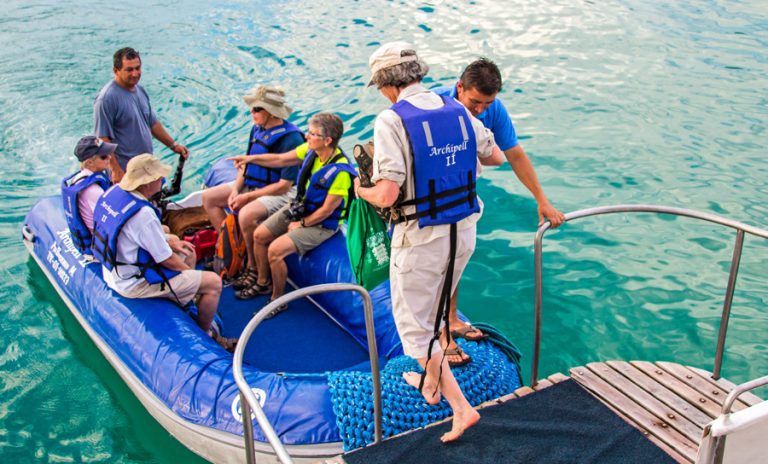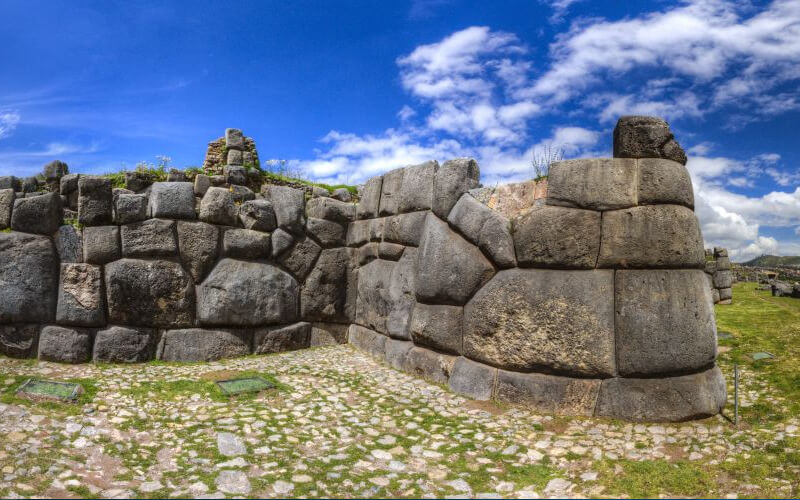Itinerary
After you arrive to Lima, pass through immigrations, retrieve your luggage, clear customs and enter the terminal your driver will be waiting with our blue & gold ILE Tours sign. You will be driven 45 min to check in to your Miraflores hotel. Enjoy the nearby shopping and restaurants in Miraflores if you arrive early enough. Overnight Lima.
At 10AM you will be met in your hotel lobby by your guide and driver and taken on a private city tour of Lima. Visit Main Square and San Francisco Convent & catacombs which is a sprawling monastery complex containing cloisters, convent, temple, 2 churches, library, tomb of Spanish conquistador Francisco Pizarro and catacombs. Completed in 1674. This is a meandering, thoughtful tour to enjoy frescoes on hallway walls, sculptures and history. LOW CEILINGS IN DARK CATACOMBS! WALK SLOWLY, DON'T BANG YOUR HEAD IN LOW DOORWAYS, ARCHWAYS and LOW CEILINGS.
OPTIONAL TOUR:
Next visit Museo Larco. It is a privately owned museum housed in a lovely 18th century viceroyalty mansion with gardens built over a 7th-century pre-Columbian pyramid. It contains over 5000 years of history and pre-Columbian art in chronologically laid out galleries showcasing ancient culture, textiles, sacrifices, erotic pottery, ceremonial vessels, warfare, ancestry, gold, jewelry, art and sculpture from all Peru. Museo Larco offers a a thorough and enjoyable, not boring, overview of 5000 years of history. There is a truly staggering collection with rooms of shelves and shelves of pottery depicting animals, birds, fish, plants, human faces, many with ailments, deformities, medical conditions for medical education that encompass much of the human condition. You will returned to your hotel after the tour. (B)
After breakfast and check-out be sure to leave nothing behind in your hotel. Proceed back into LIM the terminal from the second floor of the hotel and go to the airline counters on the first floor to check-in to your 1 hr flight SE over the Andes to historic Cusco, Peru. You will be met in CUZ and taken by private car to check-in to your downtown hotel (15 min). Rest, breathe, don't smoke and drink the complimentary coca tea provide in your hotel to help you acclimate to Cusco's 11,000 ft (3300M) elevation. You can take a leisure walk in the afternoon but do not exert yourselves your first 24 hrs at this altitude. Overnight Cusco. (B)
At 9AM, after breakfast you will be greeted in your hotel by your guide and taken on a scenic drive NE out of Cusco to Pisaq through small towns, farms and terraced valleys. Stop periodically at scenic overlooks for pictures of the dramatic landscape. Known for its indigenous craft market, Pisaq was also the easternmost fortress of the Sacred Valley. You can see Pisaq from the winding road that approaches the market town and the ruins high above the town square.
Continue west through the picturesque Sacred Valley to enjoy an excellent Andean buffet lunch in one of the best restaurants. Next visit the archaeological city of Ollantaytambo, the Inca’s northern fortress walled city where they guarded the Sacred Valley to the north. Here you can appreciate the complexity of this magnificent Inca construction built in harmony with the landscape. Spectacular views of the Sacred Valley from atop the wall where there are more magnificent cut stones.
In the after noon your guide will take you to the train station for your 90 min train further west to the town of Aguas Calientes at the base of Machu Picchu. You will be met in the Aguas Calientes train station and escorted (walk) to your hotel. Your guide will meet you in your hotel lobby at 7PM for a briefing regarding tomorrow's tour of Machu Picchu. Overnight Aguas Calientes. (B,L)
After breakfast check out and store your overnight bags with your hotel. You will be met by your guide to walk to the buses for the 20 min ride up to Machu Picchu. Buses run continuously and only stop at the top and bottom. Enjoy 2 hrs with your guide on one of the circuits. Machu Picchu was probably an estate of the Inca Pachacutec, who also designed Cusco. It was a town with individual homes for nobility made in the classical Inca style with polished dry-stone walls. Its 3 three primary structures are the Intihuatana, the Temple of the Sun, and the Room of the Three Windows. When finished take one of the continuous running buses 20 min back down to Aguas Calientes, retrieve your overnight or carry on bags from your hotel and be at the Aguas Calientes train station at least 30 minutes before your departing train to Ollantaytambo (90 min). In Ollantaytambo follow train staff to your waiting van back to Cusco (90 min). Overnight Cusco.
At 2PM you will be met in your hotel by your guide and driver and taken to enjoy a 3-4 hr tour of Cusco and surrounding important sites. Visit Koricancha, The Temple of the Sun near the center of Cusco. Koricancha is an architectural marvel since it was built with ashlar masonry, which is composed of similarly sized cuboid stones. Now Koricancha is the foundation of the Santa Domingo Church. Next drive north of Cusco for 15 minutes to the magnificent site of Sacsayhuaman. It's huge monolithic stones were perfectly cut and fit together without the use of mortar. Next drive to nearby Q’enqo – a small cave like structure used in Inca ceremonies. 10 minutes further north stop at Pucapucara, a small fortress and resting place. Finally visit the fountains and canals at Tambomachay. All of these sites are near each other and played an important part in the Inca’s ceremonies religious and civic. After completion of the tour you will be returned to your hotel before sundown. Overnight Cusco. (B)
After breakfast and check out be sure to leave nothing behind in your rooms. Driver will greet you in front of the hotel 2.5 hrs before CUZ-LIM flight ( 1 hr ) departs. In CUZ check your bags to GYE and get LIM-GYE boarding passes too. You will not be met in Lima. Simply proceed up the escalators to security, immigrations and the gates. LIM-GYE flight is (2.5 hrs). After you arrive to Guayaquil, pass through immigrations, retrieve your luggage, clear customs enter the terminal and greet your driver for private transfer to hotel (15 min). Guayaquil is a nice walking city on the river. Overnight Guayaquil. (B)
Please Note:
Your Galapagos Itinerary will depend on your yacht selection and day of departure.
Below is an example of a luxury Galapagos 8 Day itinerary
AM: Flight To Galapagos
This day you will fly from Guayaquil or Quito, Ecuador to the Galapagos. Due to the Galapagos Government, a fee of 20 USD must be paid for the migration control card. Afterwards, you will enjoy a quick 4 hour flight, with a quick stop at Guayaquil. Once in Santa Cruz, passengers must go through an inspection point at the airport to make sure that no foreign plants or animals are being introduced to the archipelago. Also, this inspection point is where passengers have to pay for the entrance to the Galapagos National Park under the following parameters: Adult Passengers $100 and Children $50 (under 12 years old) Our guide will pick you up and carry your luggage to the bus that transports the tourists to the ferries to cross the Itabaca Channel. After this, passengers will be taken by another bus to the first visit to Ranch Manzanillo where visitors must wear comfortable walking shoes, light clothing and a waterproof jacket, sun-block lotion, a camera and repellent for the first activity. The visit to Ranch Manzanillo includes a picnic lunch and a short walk before boarding the Motor Catamaran.
PM: Santa Cruz Highlands
Journeying across Santa Cruz into the highlands visitors are delighted by the island's variety of life and geology. Beginning at the coast and traveling across Santa Cruz the road departs from Puerto Ayora climbing through the agricultural lands and into the mist covered forests. Santa Cruz possesses all of the various life zones present in the archipelago. Birds will surround you across this path. Whether it's the bright red feathers of a vermillion flycatcher or one of Darwin's Finch almost every bird present in the islands can be found here. Santa Cruz offers excellent opportunities to observe the wild Galapagos Tortoises. Tracking tortoises is not the only exciting activity to be found in the highlands. There are also plenty of lava tubes, sinkholes and craters ready to be explored. After this visit return to your yacht..
PM: Punta Moreno
Punta Moreno is located on the north coast of Isabela Island between the volcano Sierra Negra and Cerro Azul volcano. The trail runs along a lava flow Pahohoe (solidified lava in the form of corrugated or an accordion) into a complex of coastal lagoons, where several species of birds which can be found around this lakes and mangroves
AM: Mangle Point, Fernandina Island
Off the eastern coast of Fernandina, Mangle Point can be found, a superior snorkeling site and a beautiful location for riding in a panga or zodiac through a grove of mangrove trees. A hike of about 1/2 miles is possible. While you are on your ride, you are likely to see sea lions, tortoises, pelicans, rays and birds too numerous to name them all.
AM: Urbina Bay, Isabela Island
Urbina Bay is located at the base of Alcedo Volcano on the west coast, between Tagus Cove and Elizabeth Bay. This area experienced a major uplift in 1954, which caused the land to rise over 16 feet. The coast expanded half a mile out, leaving marine life stranded on the new shore. This area is also a great place to snorkel. Urbina Bay is a path that starts off with a wet landing. The course is approximately 3200m, and made up of sand, pumice, lava, coral and vegetation where one can observe iguana burrows. It is an ideal place to see red and blue lobster! In Bahia Urbina you can see Darwin's finches. Its main attraction is the land iguanas, which are larger than in places like South Plaza Island and Galapagos tortoises also in the wild, sometimes even out of season they are on the bottom of the islands. A large amount of vegetation can be observed such as chamomile and Rosewood, but among all these plants, the beautiful flowers of cotton Darwin, endemic to the Galapagos Islands stand out.
PM: Tagus Cove
Tagus Cove is located west of Darwin Volcano on Isabela Island. This was a favorite spot for pirates and whalers, and it was them who started the following tradition: the inscription of the names of boats. At the beginning of the trail, you will see a small cave where you will find inscriptions dating to the 1800s. Its name originated from a British warship that went across the islands in 1814 looking for Galapagos Tortoise for food. Due to former eruptions, the substrate has a large amount of volcanic rocks of different sizes, among the most common are little balls of nearly spherical shape known as the "lapilli" or petrified rain.
PM: Punta Vicente Roca
One of the most impressive and spectacular places of the enchanted Galapagos Islands; with high cliffs and tuffstone, ash and lava formations give this area a majestic touch, is Punta Vicente Roca. It is located in the north-western coast of the island; comprises two distinct islets. This large bay has a spectacular marine life. Here, you can see seahorses, sea turtles and the strange yet fascinating Mola-mola or sunfish. This bay is a great place to practice Panga Ride and Snorkeling.
We can as well find: Penguins, Blue-footed boobies, Terns, Boobies, Sea lions. Also you can snorkel and observe sea turtles, stingrays and puffer fishes.
AM: Espinoza Point, Fernandina Island
Espinoza Point is a famous place known for its large colonies of marine iguanas and as the habitat of unique species like the flightless cormorant, Galapagos penguin, Galapagos hawk, and Galapagos snake.
PM: Puerto Egas, Santiago Island
It's black beach is located on the west side of the island and is the main attraction of the island. Their volcanic tuff deposits have favored the formation of this special black sand beach. This site is called Puerto Egas, because there was an attempt to start the exploitation of salt, which failed because the price of salt in the continent was very cheap, and did not justify its exploitation in Galapagos. The project was abandoned and the infrastructure was left abandoned.
AM: Playa Espumilla, Santiago Island
Espumilla beach is located on the northern coast of Santiago Island in James Bay. During the last presence of the El Niño phenomenon, one of the two lagoons in this site, underwent a process of sedimentation, thus causing the disappearance of a representative colony of flamingos. The main attractions are the palosanto forest and the nesting of baby turtles.
PM: Chinese Hat
This is a small islet (1 sq km) located just off the southeastern tip of Santiago Island. It is a recent volcanic cone, shaped like a Chinese hat when seen from the north. On the west you can see lava formations, formed under the sea and raised upwards, this is why coral heads are found on the lava. This is an excellent visit for interpretation of geological features such as lava tubes and lava flows. The landscape is covered by sea lions colonies, marine iguanas, and Galapagos penguins.
AM: Rabida Island
Rábida Island is unique due to the red color that colours all rocks and sand. The volcanic material in this island is very porous and external factors as rain, salty water, and sea breeze have acted as an oxidizing agent. A short walk along a trail leads you to a coastal lagoon behind the beach which permits you to observe the land birds such as finches, doves, yellow warblers, and mockingbirds. At the lagoon there is a colony of flamingos.
PM: Bartolome Island
Bartolome Island is situated across Sullivan Bay. It has an altitude of 114 meters , from where we can observe one of the most beautiful sceneries of the Galapagos Islands such as: Volcanic cones, lunar - like craters, lava fields, and the famous Toba formed pinnacle eroded by the sea. There is very little vegetation on this island. It has two breathtaking beaches where marine turtles exist and at the base of the pinnacle, as well as a very small colony of Galapagos penguins.
AM: Sullivan Bay, Santiago Island
Santiago, also called James, or San Salvador Island, is located in the west central part of the Galapagos archipelago. It is the fourth largest island in the archipelago (following Isabela, Fernandina and Santa Cruz). Along with some of the large western volcanoes of Isabela and Fernandina, Santiago is also volcanically active, with many young flows and cones to be seen, particularly along the south, west, and east coasts. These may even be seen from the summit of Darwin Volcano and from space. A number of historic eruptions have been reported over the last 2 centuries. Santiago actually consists of two coalesced volcanoes: a typical shield volcano on the northwest end and a low, linear fissure volcano on the southeast end.
AM: Bachas Beach, Santa Cruz Island
These two small beaches are found to the West of Turtle Cove. Their sand is made of decomposed coral, which makes it white and soft, making it a favorite nesting site for sea turtles. Behind one of the beaches there is a small brackish water lagoon, where it is occasionally possible to observe flamingos and other coastal birds, such as black-necked stilts and whimbrels. The other beach is longer, but it has two old barges that were abandoned during the Second World War, when the USA used Baltra Island as a strategically point to protect the Panama Channel. After the morning excursion you will be taken to the airport for your flight to the mainland.
At the end of your cruise you will be Transferred to the Galapagos airport in time for your flight back to the mainland. You can disembark in either Guayaquil or Quito depending where you will be flying home from.
END OF SERVICES.



